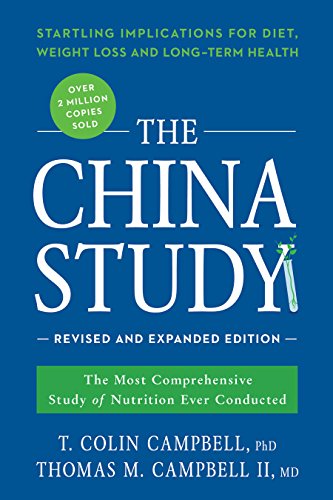

This article is an excerpt from the Shortform summary of "The China Study" by Colin Campbell. Shortform has the world's best summaries of books you should be reading.
Like this article? Sign up for a free trial here .
“Big Food” is an influential industry–their positions as key economic players in the U.S. gives them influence in the government. But how closely tied are food and politics? And how does it affect American citizens?
We’ll look at extended examples of ways the food industry influences policy, and we’ll cover how this affects you.
Editor’s note: This article is part of Shortform’s guide to dieting. If you like what you read here, there’s plenty more to check out in the guide!
Bedfellows: Food and Politics
Food is one of the biggest threats facing the American people. Our eating habits kill more of us than tobacco use, accidents, or any other lifestyle factor. Yet the government promotes the consumption of meat and dairy, foods that hundreds of studies say cause disease. Why? Is the government for the people, or at the expense of the people?
Problems With the Government’s Approach to Health
The government has released some questionable dietary recommendations over the past decades. Let’s look at why they’re releasing unhealthy guidelines and how it affects the consumer.
Food and Politics Problem #1: The Need to Get Reelected
The government is closely tied to the food industry, and elected officials need to represent their constituents to get reelected.
For example, in 1976, Senator George McGovern headed a committee that drafted dietary goals based on a survey of the science linking diet to heart disease. He recommended that Americans decrease their consumption of fatty animal products and increase their consumption of fruits and vegetables.
But the goals were so controversial in the senate (because of their recommendation to decrease consumption of animal products) that the committee had to substantially revise them. McGovern and five other senators from agriculture states lost their 1980 reelections, in part because of their involvement with the dietary goals.
Keeping donors and influential industries happy informs the actions of many government officials. The politics of food is a big deal.
Food and Politics Problem #2: Politicians Write Guidelines
The government has the power to establish nutrition guidelines, even though officials usually have no particular expertise in nutrition and eat the same diet that kills thousands of their constituents every day.
Government employees have power over nutrition guidelines at various stages of their development. They provide the money for the researchers devising the guidelines. They also choose the chair of the committee, who then chooses the other members. The government can then pick and choose what it likes from the resulting report.
Example, Problem #1: The Government’s Ties with Industry
When the lines between the three start to blur, the public suffers. The following examples of the link between food and politics come from researcher T. Colin Campbell’s book The China Study.
The government’s Dietary Guidelines Advisory Committee writes the reports that provide the foundation for government dietary recommendations. In 2015, the committee established relatively conservative recommendations.
Committee members looked at the scientific evidence and concluded that the healthiest diets were ones high in fruits, vegetables, whole grains, and low-fat dairy and low in red meat, processed meat, refined grains, and sugar-sweetened foods. They also determined that healthy diets were higher in plant foods and lower in animal foods.
While these recommendations may not sound too controversial, 30 Republican senators and 71 Republican representatives in the House tried to block the report’s publication. They said that the committee’s findings regarding meat were inconsistent with, and even contradicted, years of research on the health benefits of lean red meat.
The Republicans citing this research had no background in science or nutrition. They were acting on behalf of their donors. The senators opposed to the recommendations had accepted over $1 million from the food industry the year prior. Half of that came from the beef industry. Representatives in the House that were opposed to the recommendations had accepted $2 million from the food and agriculture industries the previous year. This is the world of food and politics, and this is legal.
These Republicans won their case. Government officials removed all recommendations they viewed as harmful to the animal-food industry. They changed the focus of the report to individual nutrients rather than whole foods, a tactic that misrepresented the scientific evidence and made the recommendations harder for laypeople to understand.
They also got rid of the old summary, which recommended a diet high in plant foods, and replaced it with five broad principles, including one vague suggestion to maintain healthy eating patterns and another to choose “healthier” foods and drinks. Nowhere in the summary did they define “healthy.” They let the reader (and the food industry) decide what it meant to maintain healthy eating patterns and what constituted a healthy drink. Many of the principles were imprecise enough that they could mean whatever the reader wanted them to.
Republicans then requested $1 million to conduct a review of how the Dietary Guidelines were drafted, aiming to change the procedure and avoid another public feud between scientific and government committees. The politics of food can get nasty.
As demonstrated, government nutrition guidelines are often set not for the health of the nation but for the financial health of American industries.
Example, Problem #2: The Government Doing the Expert’s Job
As we’ll see, Problems #1 and #2 are closely linked.
The government establishes recommended daily allowances (RDAs) for nutrients. The most recent report from the Food and Nutrition Board (FNB) says that to minimize our risk of chronic disease, we should get 45-65% of our calories from carbohydrates, 20-35% from fat, and 10-35% from protein. Further, we should get no more than 25% of our calories from added sugars. These recommendations are outrageous, and they demonstrate the clear link between “Big Food” and politics.
Dietary Fat
The FNB increased the percentage of fat they deemed healthy from 30% in the previous report to 35%. They also said children could get up to 40% of their calories from fat.
These recommendations have no basis in science. No studies indicate that this is a healthy amount of fat and most researchers would tell you to eat far less of it.
Protein
The FNB-recommended percentage of calories from protein (again, 35%) is the highest ever and also not based on any science known to the authors.
Humans only need to get 5-6% of their calories from protein. Most Americans eat 15-16% protein. Only people who intentionally eat high-protein diets as a way to build muscle eat more than 21% protein. 35% is extremely high.
One of the committee chairs said that there was little discussion about protein when drafting the guidelines, and that he didn’t even know about the 35% upper limit. When questioned further, he said he really didn’t know that much about nutrition, giving rise to the question of why he was the chair of a nutrition panel in the first place. This is a clear consequence of the politics of food.
(Another committee chair left the committee, just before the guidelines were published, to become an executive at a large food company.)
Sugar
The FNB’s suggestion that it’s healthy to get up to 25% of your calories from the sugar in candy and soda means that, on this “healthy” diet, half of your carbohydrates could come from refined foods. In contrast, the World Health Organization (WHO) recommends an upper limit for sugar of 10%.
Why is there such a discrepancy between the FNB and WHO recommendations? The sugar industry may have succeeded in the U.S. where it failed internationally.
When the WHO set its sugar recommendation at 10%, the sugar industry threatened to use its ties with the American government to cut WHO’s funding ($406 million) if it kept the upper limit at 10%. The WHO scientists stood their ground. Presumably, the FNB scientists didn’t.
A menu that would meet the FNB dietary standards might look like this:
- Breakfast: Sugary cereal, skim milk, one packet of candy, and a handful of fiber and vitamin supplements.
- Lunch: Cheeseburger.
- Dinner: Three slices of pizza, a can of soda, and sugar cookies for dessert.
You can follow the government’s recommendations and eat terribly. But you may not know you’re eating terribly if you don’t have a background in nutrition. It’s dangerous to let government recommendations inform your food choices.
Industry Ties and Dietary Guidelines
Again, the problem of the government setting our dietary standards is intimately tied to the problem of food companies being overly influential in the government and elsewhere.
The groups that gave personal compensation to members of the FNB included the M&M Mars company, the Dannon Institute, Coca-Cola, Burger King, and Nestlé. Additionally, six of the eleven FNB members had personal and financial ties to the dairy industry.
How Does Food Politics Affect You?
Government dietary recommendations are important. They affect what’s put on food labels, how the food pyramid is established, and what’s served in school lunches and at hospitals and nursing homes. Tens of millions of Americans depend on government programs for much of what they eat. These are not recommendations many of us can ignore.
Summary of Recommendations
Be aware that government-issued dietary recommendations are political and don’t always reflect the most rigorous or recent scientific research. The influence of “Big Food” on politics is rampant and doesn’t show signs of slowing down.
———End of Preview———

Like what you just read? Read the rest of the world's best summary of "The China Study" at Shortform . Learn the book's critical concepts in 20 minutes or less .
Here's what you'll find in our full The China Study summary :
- Why animal proteins (meat, milk) might cause cancer, diabetes, and other diseases
- Why the medical institution is structured to hide the truth about disease and food
- The precise diet you'll need to eat to live longer and feel happier






